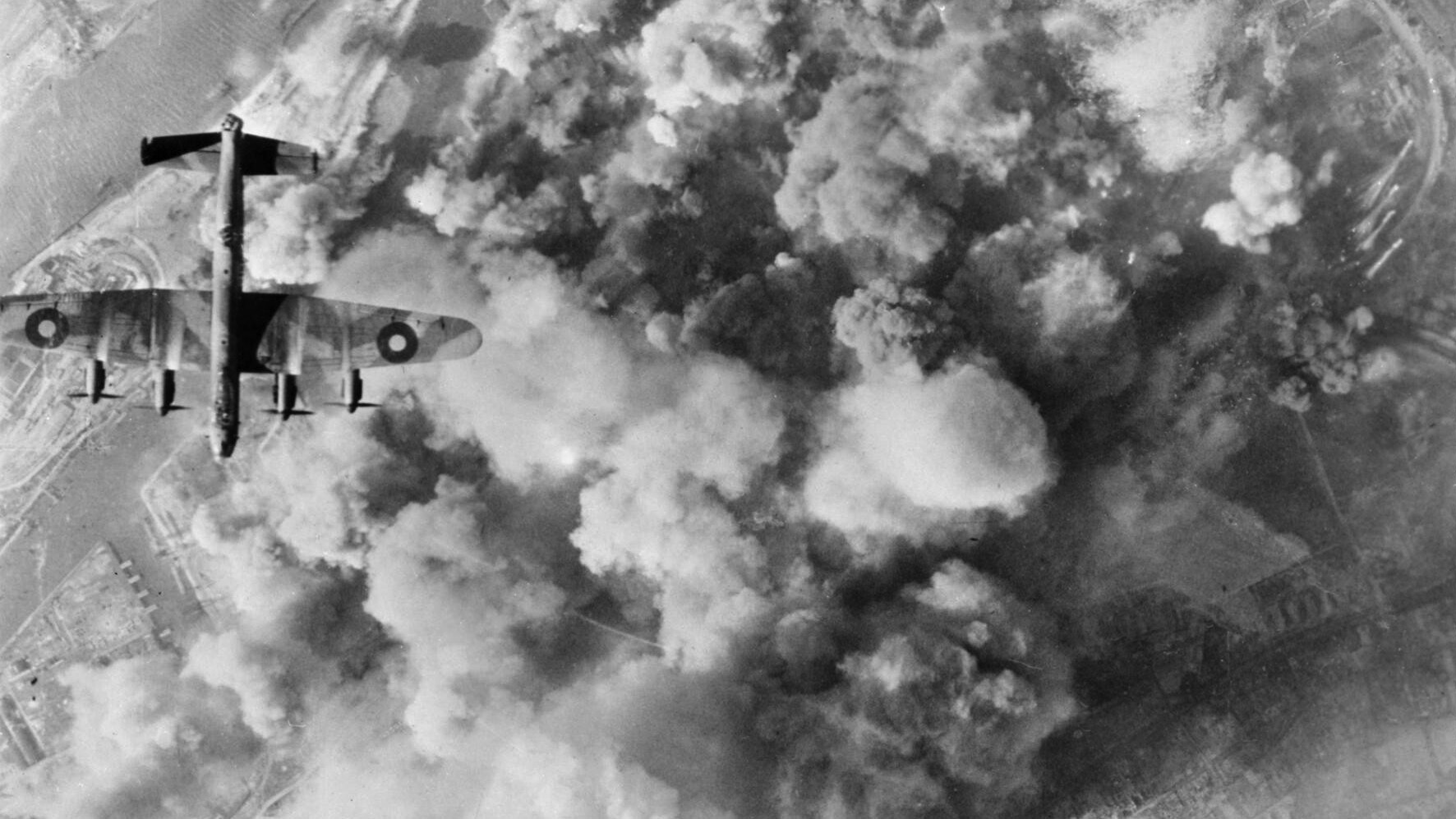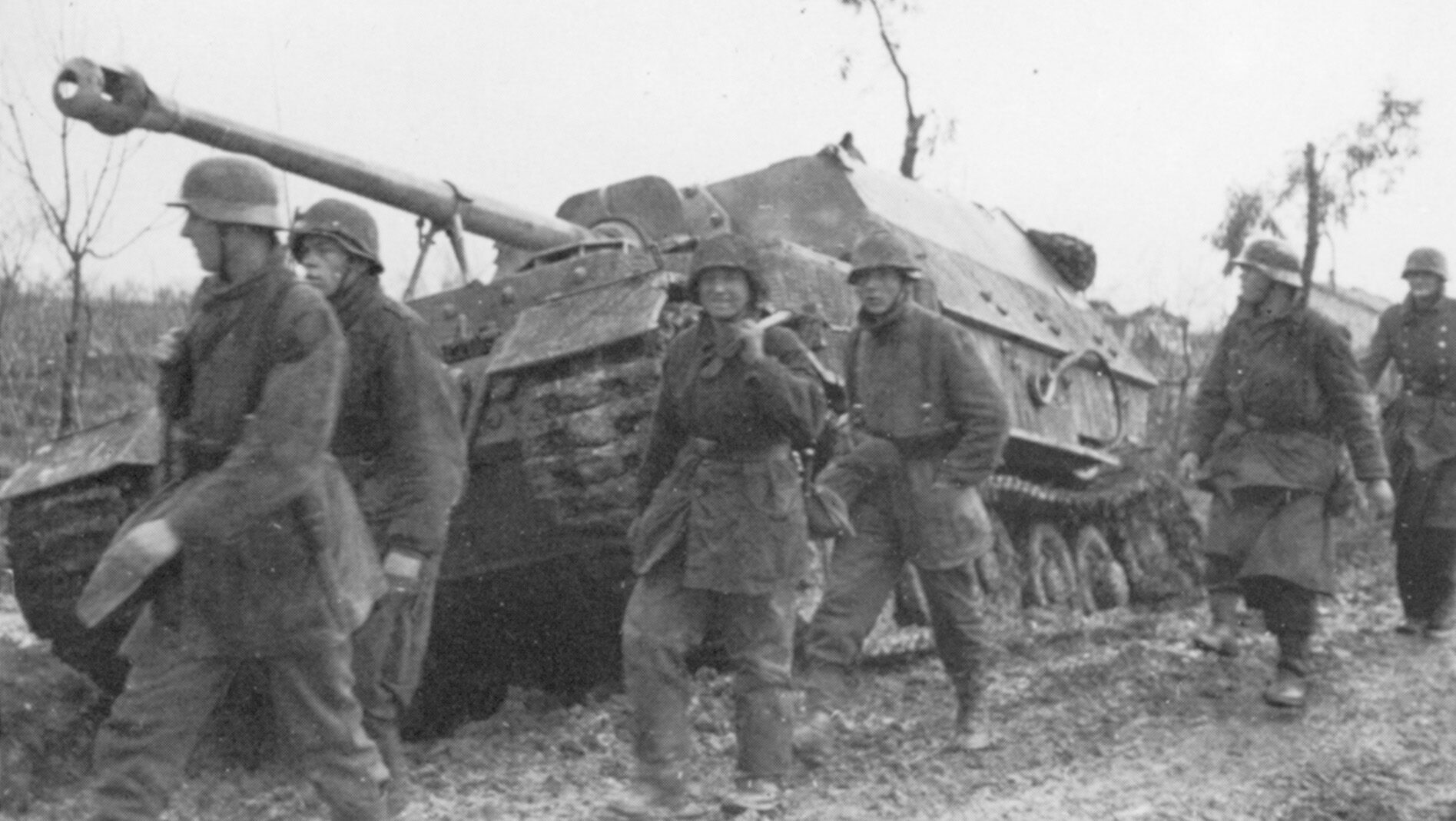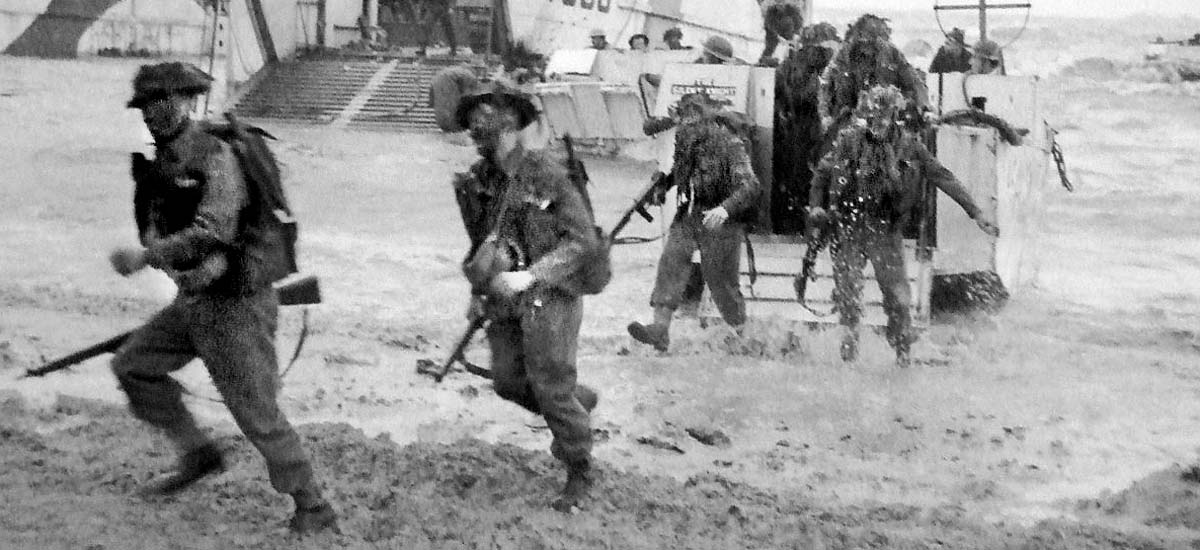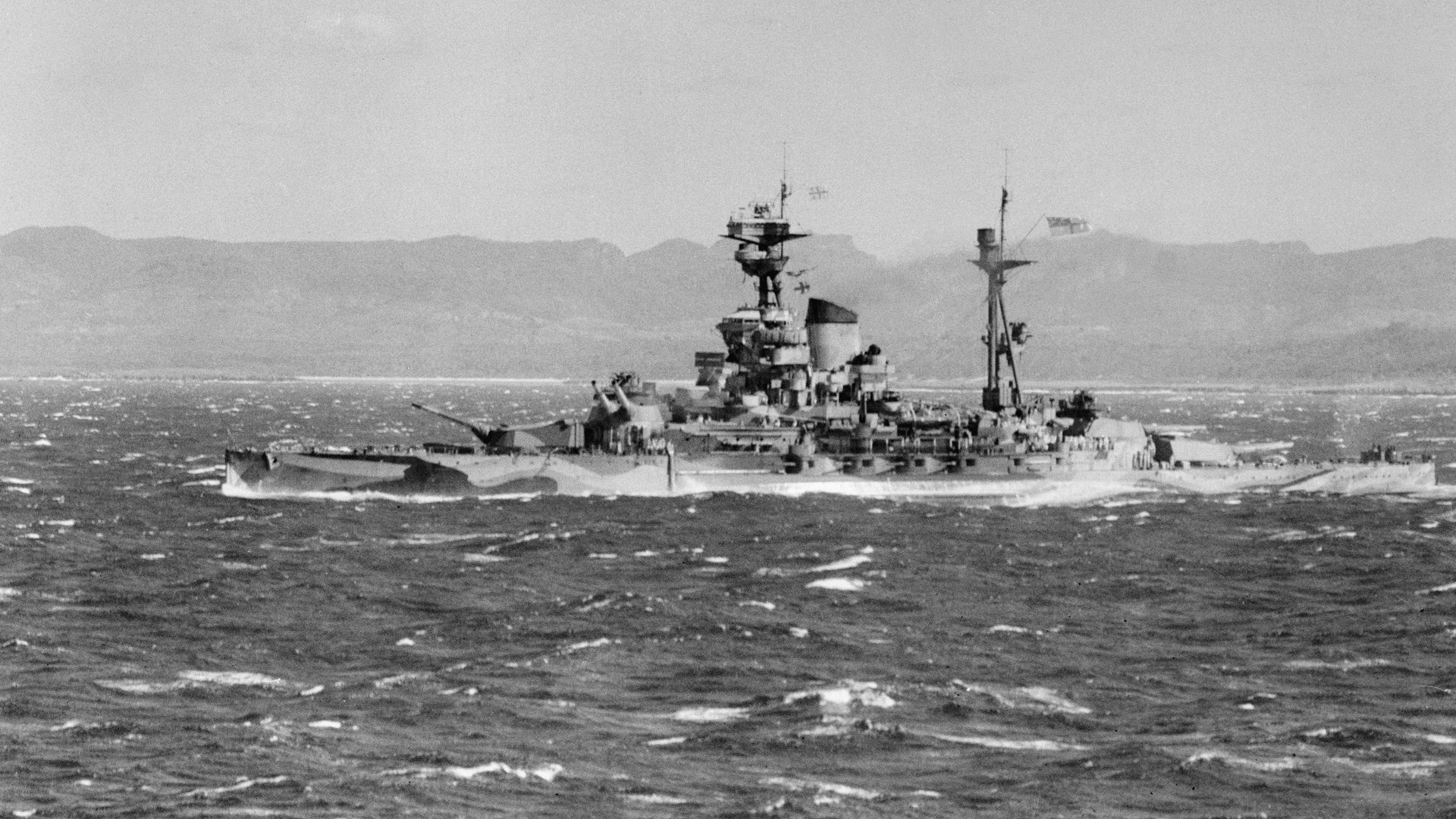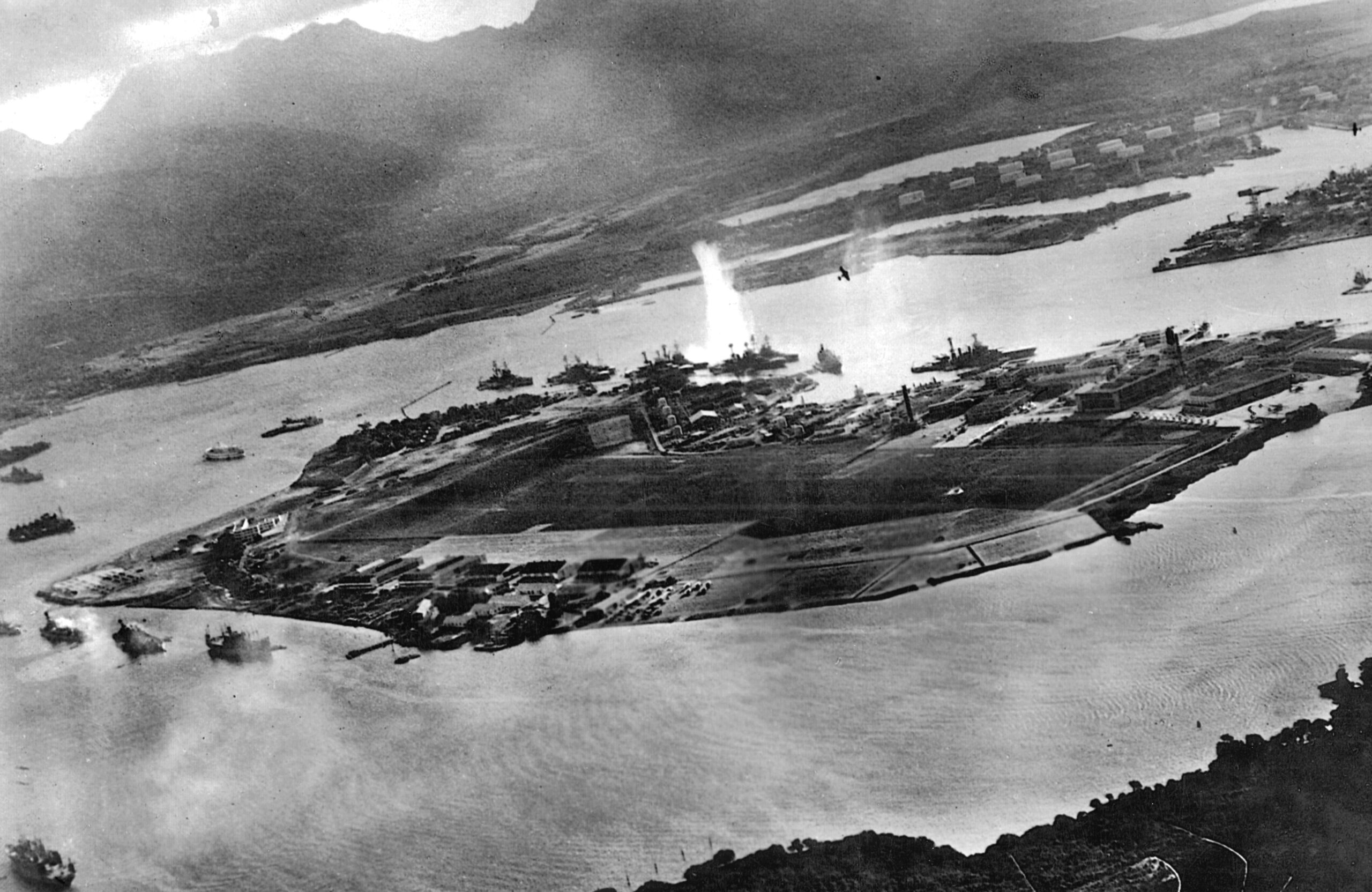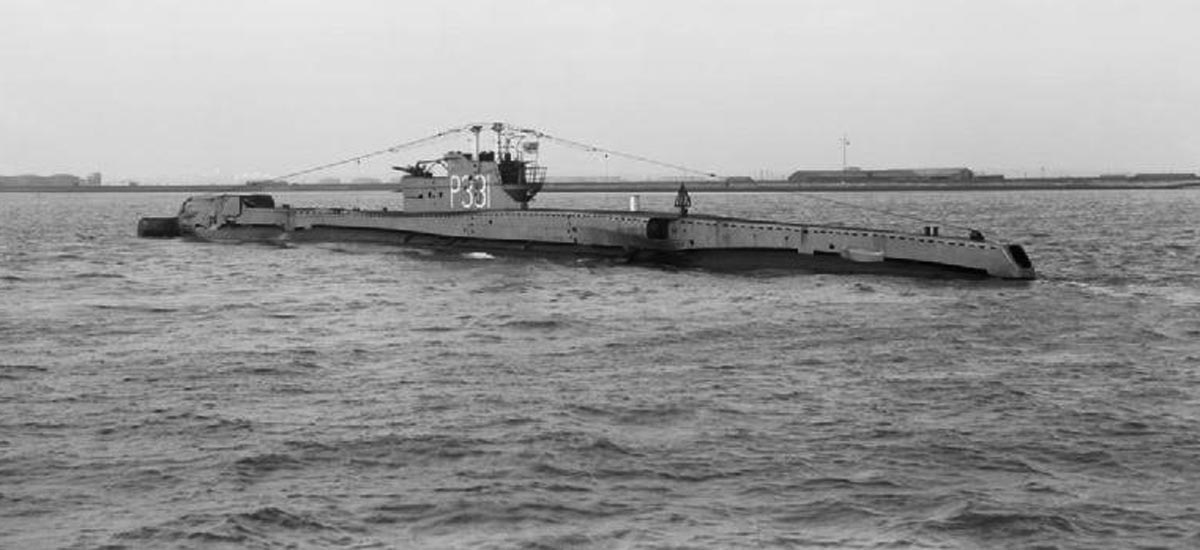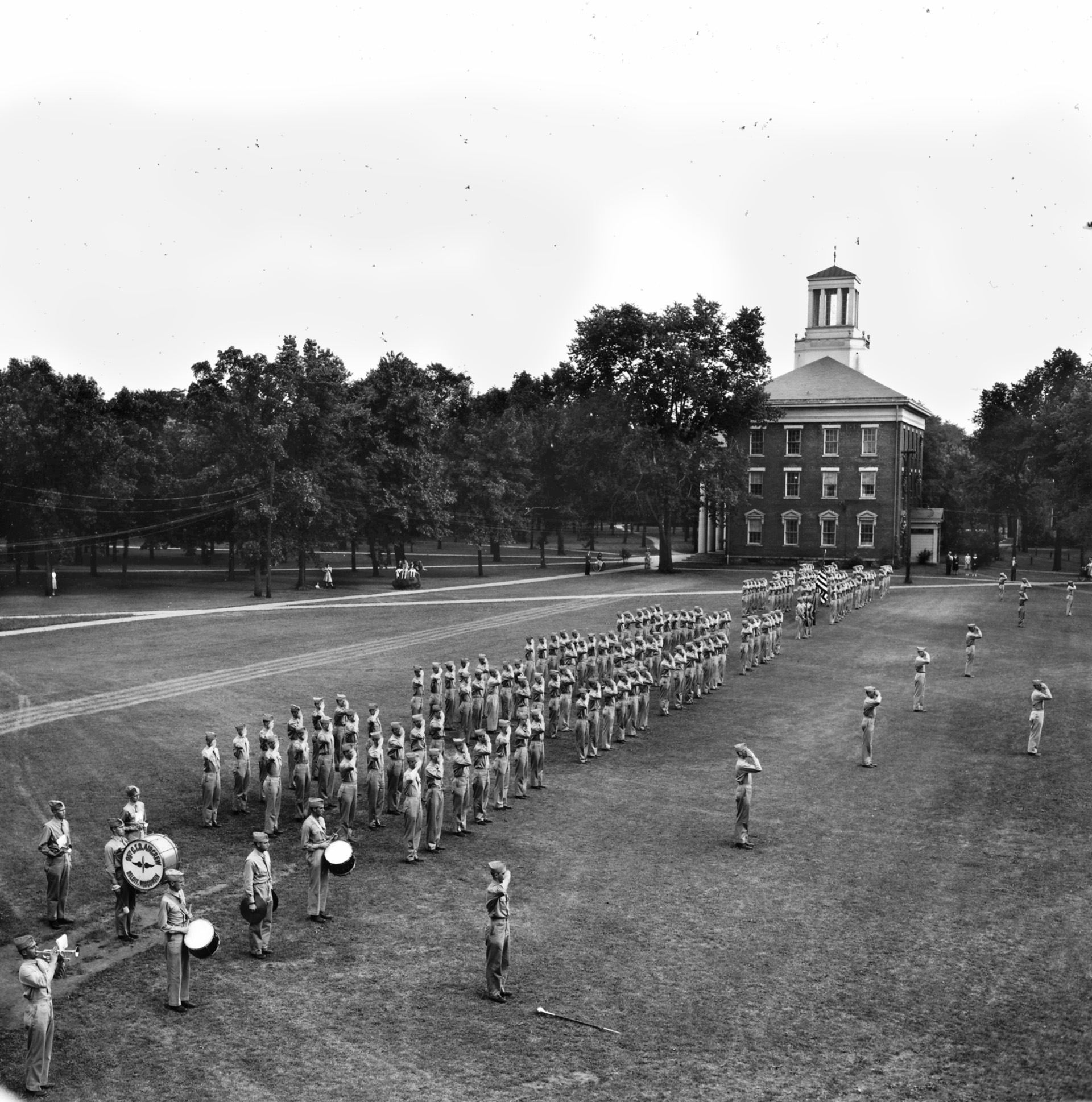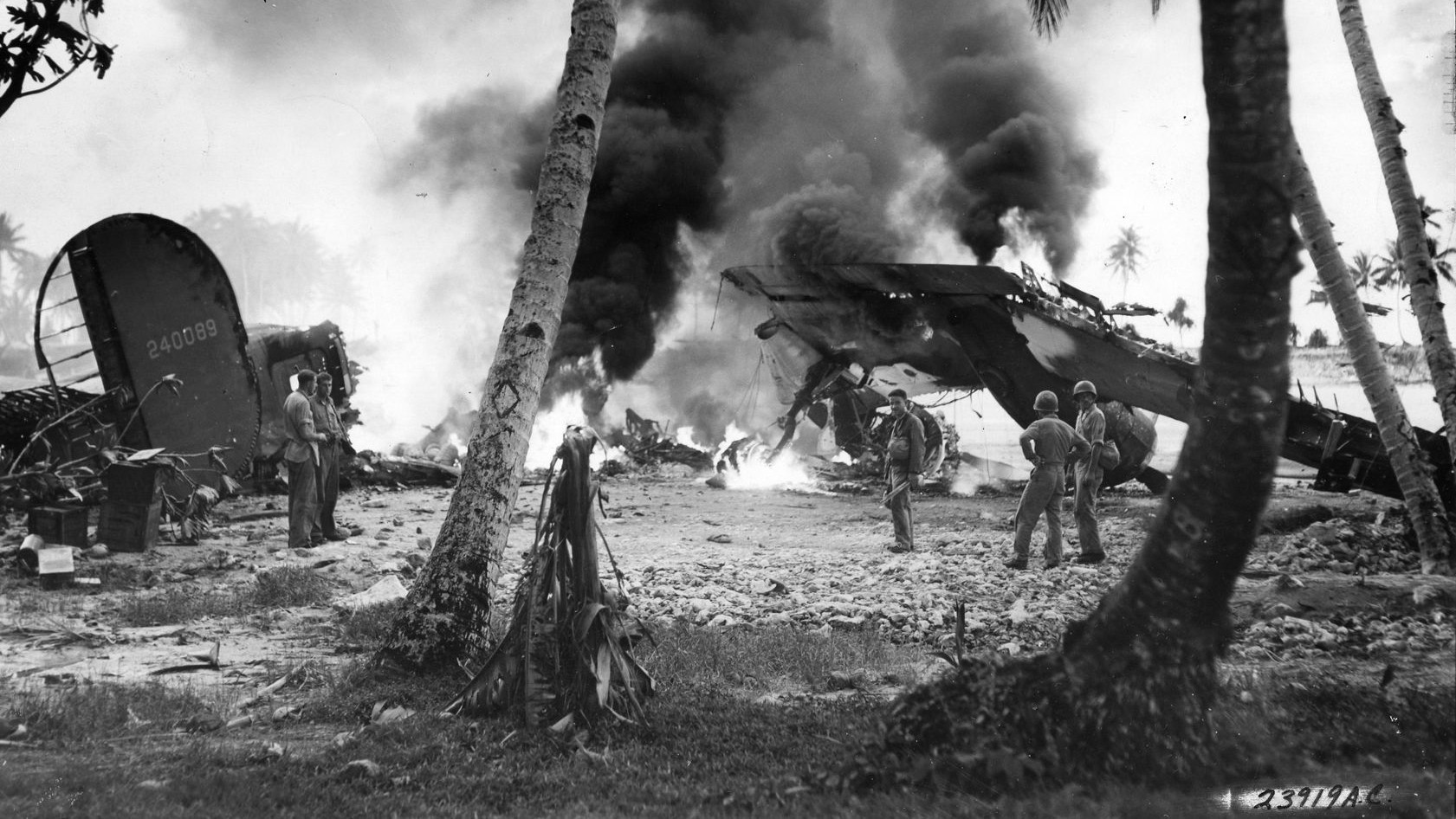By Nigel Price
Powerful, brisling with firepower and able to carry an amazingly large bombload, the majestic Avro Lancaster, along with the iconic Supermarine Spitfire, has come to symbolize the might of the Royal Air Force in World War II.
The Lancaster’s impressive combat record—carrying out some 156,000 individual missions, including several that dropped the 22,000-pound (10,000kg) Grand Slam “Earthquake” bomb—is proof of its credentials. Indeed, the type’s design was so good it was developed into the Lincoln bomber and later the Shackleton, which was still in frontline RAF service in 1991.
But the Lancaster is an aircraft that had a troubled birth, and it very nearly wasn’t built at all.
Few in Europe envisaged the need for long-range, four-engine bomber aircraft as the continent sped headlong into World War II in the mid-to-late 1930s. The general consensus—outside of America—was that a fast, medium-sized twin-engine craft with a modest payload would be equal to the task of strategic assault. In fact, while Boeing was designing its highly advanced, long-range, four-engine B-17 Flying Fortress bomber in the U.S. in 1934, Hitler’s Germany was developing a twin-engine attack force—Heinkel He-111s, Dornier Do-17s and Junkers Ju-88s. Britain responded with the similar-sized Bristol Blenheim, the HP Hampden, and the larger Vickers Wellington twin. The twin-engine bomber concept had worked for German’s Condor Legion in the Spanish Civil War, with large numbers of He-111s being supported by a smaller force of Do-17s.
The Blitzkrieg unleashed on Poland, Western Europe, and Scandinavia during the early years of World War II again validated the twin-engine approach, although fighter tactics to counter the medium-bomber threat were rapidly being developed. In fact, the mauling dished out by the RAF’s Fighter Command to the Luftwaffe in the summer of 1940 proved that medium bombers were highly vulnerable and often weren’t able to drop enough explosives on their targets to render their missions a success.
As the British went on the attack following the Battle of Britain, it was clear that its bomber force wasn’t going to achieve its objectives. Most types in service were too slow to escape Luftwaffe fighters, couldn’t fly high enough to avoid flak antiaircraft guns, or couldn’t carry sufficient bombs far enough to reach targets deep into occupied territory. Bomber Command flew mainly night missions to reduce casualties, but early loss rates were still horrendous—close to 330 precious aircraft and crews in the last six months of 1940 alone.
In addition to acquiring small numbers of U.S.-made B-17s, the British developed a trio of new four-engine bombers. First to fly was the Short Stirling. Entering service in the fall of 1940 and flying its first combat missions the following year, the Stirling was complex, and although it flew more than 10,000 separate sorties, it suffered a high loss rate.
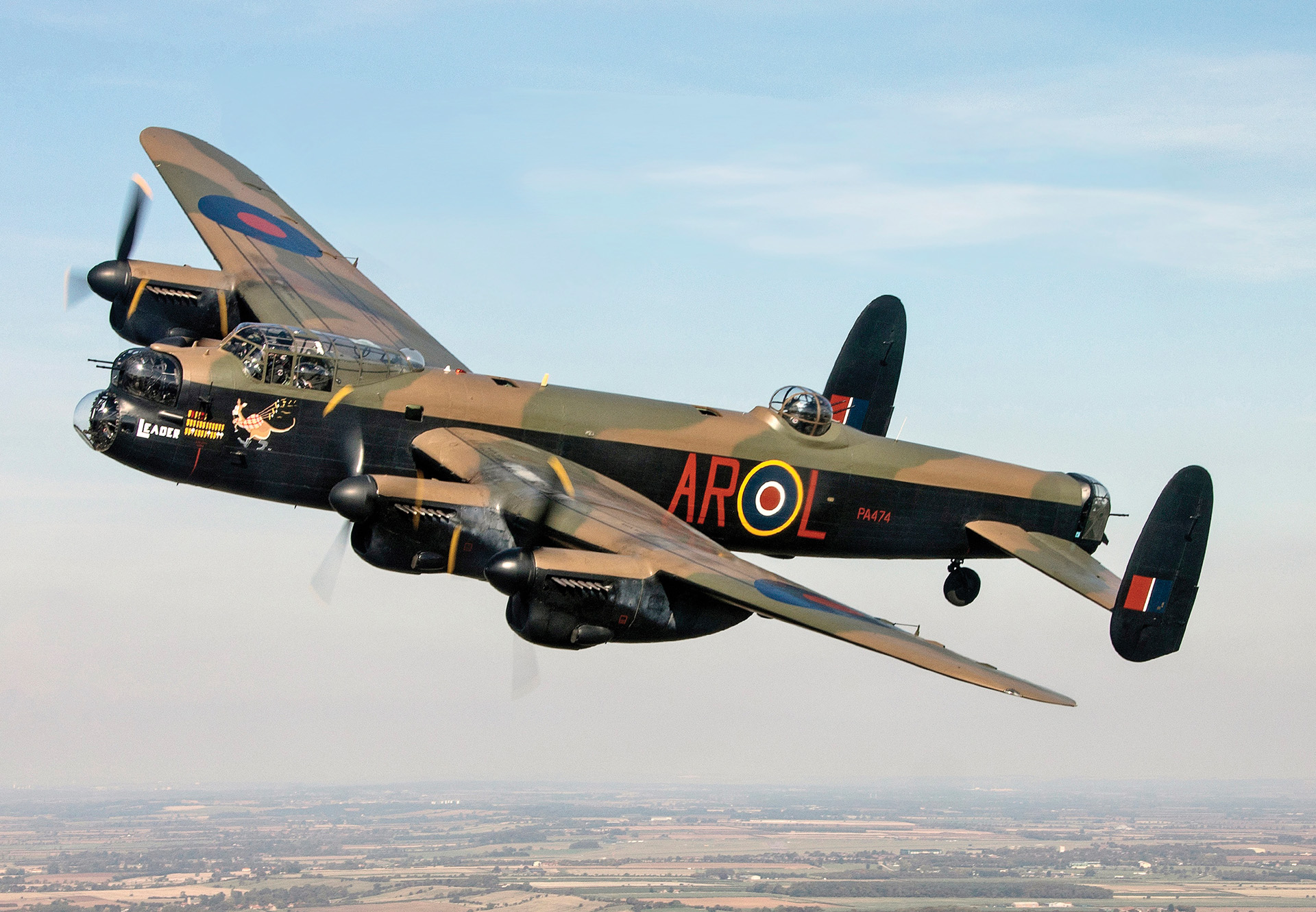
Next up was the Handley Page Halifax. It entered service at around the same time as the Stirling but was far superior. It was easier to fly, faster and, importantly, could fly higher. But the third of the RAF’s heavy bombers, the Lancaster, is perhaps the best known. But how that came about was unusual, to say the least.
Designed by Avro’s Roy Chadwick, the ‘Lanc’ was a development of the company’s ill-fated Manchester—a twin-engine bomber powered by two Rolls-Royce Vulture 1,760hp, 24-cylinder engines. The Manchester prototype first flew on July 25, 1939, and the bomber entered service with the RAF 16 months later. That long development period highlights the problems encountered with the Manchester—it was underpowered, and the engines were unreliable. Although a total of 202 were built, it proved to be nothing short of a disaster for its crews—losses were high, with around two-thirds of the RAF’s Manchester fleet being written off in combat or in training accidents in just a couple of years. In fact, it lasted not much more than a year in frontline service.
There were plans to produce a Manchester II, powered by Napier Sabre or Bristol Centaurus engines, but the project was thought to be impracticable and was scrapped. Fortunately, Chadwick persevered and devised the idea of fitting the very dependable Rolls-Royce Merlin powerplant in place of the dreadful Vultures. He also saw an opportunity to redesign the bomber’s wings to accommodate four Merlins, boosting performance in every respect. The project was given the green light, and the foundations for the Lancaster—originally designated the Manchester III—were laid.
The Lancaster prototype, serial number BT308, made its initial flight on January 9, 1941, in the hands of Avro test crew Sydney ‘Bill’ Thorn and Sam Brown. It featured the Manchester I’s three-finned tail layout to aid directional stability, but the middle unit was found to be unnecessary and was removed from the second prototype, DG595.
The Lancaster became the most numerous four-engine “heavy” in Bomber Command’s inventory, with most of the 7,377 built during the war years being produced by Avro at its Chadderton plant in Oldham, Lancashire, and test-flown from Woodford in Cheshire. Building the Lancaster fleet required a staggering amount of manpower and materials. More than 920 companies were involved in producing sub-components for the production lines, and, at its height, some 1.1 million men and women were employed making the parts or assembling the aircraft. More people were involved in building, maintaining, and flying Lancasters than any other RAF aircraft, before or since.
The initial version, the Mk.I, stayed in production until well after the war. Sub-variants included the Mk.I (Special), which could take the “Tallboy” and “Grand Slam” high-capacity bombs; the Mk.I (FE), modified for use against the Japanese in the Far East with the Commonwealth’s “Tiger Force;” and the post-war PR.1 photo-survey conversion.
The B.II variant was powered by Bristol Hercules radial engines due to shortages of the Merlin, and it struggled to match the Mk.I’s altitude; only 300 were made. The B.III featured U.S. Packard-built Merlins but was otherwise almost identical to the B.I. The aircraft modified to drop the Upkeep “bouncing bomb” for the May 1943 “Dambusters” raid were known as Mk.III (Provisioning). Coastal Command conversions were the ASR.III (ASR.3 from 1948) for air-sea rescue and the GR.III and MR.III for general and maritime reconnaissance, respectively. Only a handful of Mk.VIs were made; they were essentially Mk.IIIs with Merlin 85s and annular cowlings.
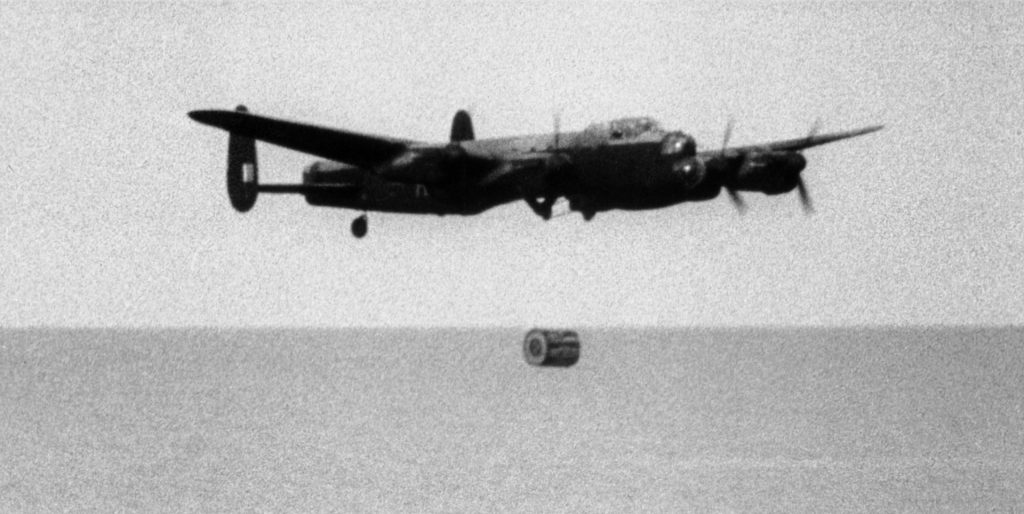
The Mk.VII was produced by Austin with a Martin-built top turret, and there was also the Mk.VII (FE), which included “tropicalized” modifications for use in the Far East with Tiger Force. Lancasters were also made under license by Victory Aircraft in Malton (Toronto), Canada. The company completed some 430 examples (Mk.Xs) between 1943 and 1945, with U.S.-built Packard Merlins being used in place of Rolls-Royce units and changes to the armament being the major differences from their UK counterparts.
The first production Lancasters were assigned to the RAF’s 44 Squadron at Waddington air base, near Lincoln on England’s eastern coast in early 1942. A second unit—97 Squadron—received its Lancs soon after. Little time was wasted in getting the bomber ready for combat. Its first operational sortie, a minelaying mission flown by No.44, took place on March 2 of 1942. Just over a week later, the Lancaster was flown in small numbers in a raid on Essen, Germany.
More Lancasters soon came online, allowing less-capable aircraft types to be withdrawn. Units flying the Manchester, Wellington, and Stirling converted to the Lanc, and even some Halifax squadrons later swapped their trusted steeds for the big Avro. In all, Lancasters would equip 66 RAF frontline units, plus more than 20 training and conversion squadrons, some of which also participated in combat missions.
The build-up of the Lanc force was rapid, indicative of how relatively simple the craft was to build. For example, less than three months after the Lancaster’s combat debut, 73 Lancs of 5 Group took part in Operation Millennium, the RAF’s first 1,000-bomber raid, which targeted Cologne. Another 74 flew on the second such raid (on Essen in early June 1942), and 96 in the final RAF 1,000-bomber attack, which hit Bremen in late June 1942. A total of six Lancasters were lost on these three missions, including four on the Essen attack.
Perhaps the most celebrated Lancaster unit was 617 “Dambuster” Squadron, which was led by Wing Commander Guy Gibson. It famously used the Lancaster when it undertook Operation Chastise, the legendary attack on the Ruhr on the evening of May 16, 1943. Tasked with hitting a target many believed to be indestructible, far behind enemy lines, using an untried revolutionary bomb, under the glare of a full moon sounds like an impossible mission. But the men of the 617 Squadron did just that and struck a blow to the heart of the Nazi regime. While the damage caused on that fateful evening hurt Germany’s ability to wage war, the negative effect on the nation’s morale was even more considerable, and the raid’s success greatly lifted the spirits of the pressured Allied forces around the world. It also meant the Germans had to commit more troops and antiaircraft guns to the area after the dams were repaired, thus removing them from other important targets. But the raid came at a heavy cost—19 Lancasters and 133 men took part in the mission, but eight aircraft didn’t come back. A total of 53 men from 617 Squadron were killed.
After the Dams raid, 617 became something of a special-operations unit. Targets such as the San Polo D’enza Serivia and Aquata Scrivia power stations in Northern Italy, the Dortmund-Ems Canal, and the Antheor Viaduct on the French/Italian border were all attacked in 1943. The unit (along with Lancs from 9 Squadron) famously attacked the German battleship Tirpitz as part of Operation Paravane in September 1944. It was to be a complex mission that involved deploying to Yagodnik in Russia and attacking the ship in a northern Norwegian fjord with several Tallboy bombs. Some Lancasters from both units crashed in bad weather or ran out of fuel during the ferry flight east.
The remaining force of Lancasters that reached Yagodnik set off to bomb the Tirpitz on September 15, and although they didn’t destroy the battleship, they did cripple it, and the damage necessitated much repair work. By the time the crews reached home, each Lanc had covered a total of almost 5,000 miles during the operation.
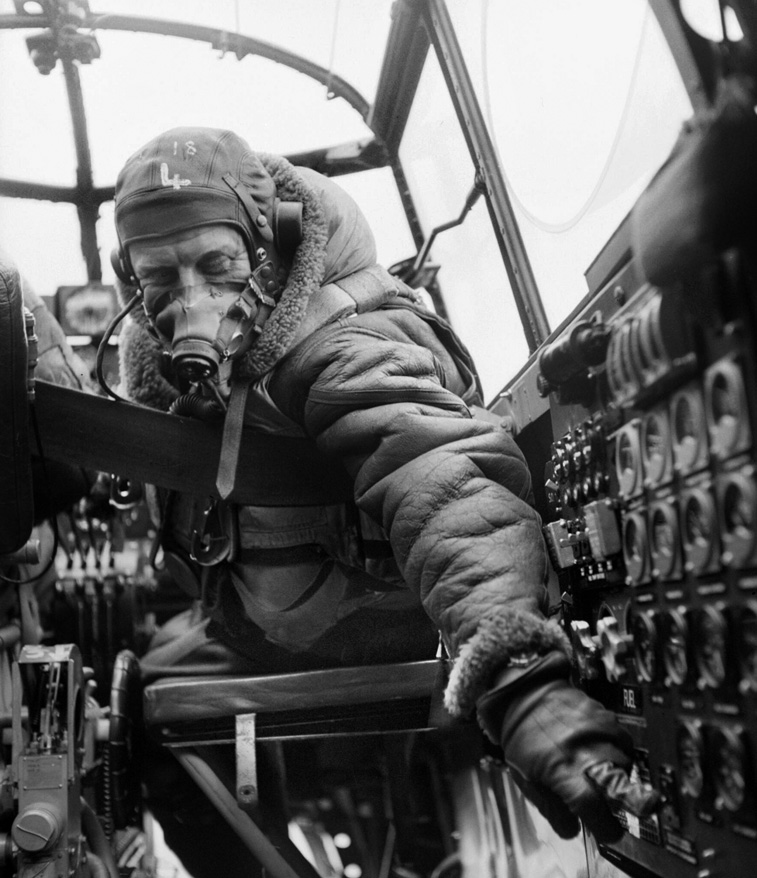
The patched-up Tirpitz was moved to Tromso, around 200 miles south of its previous location. Tromso’s defences were bolstered, and a squadron of Focke-Wulf FW-190 fighters arrived at nearby Bardufoss to provide fighter cover. The good news for the RAF was that Tromso was potentially within range of aircraft flying from RAF Lossiemouth in Scotland.
Calculations showed that the fuel required for the 2,250-mile flight would put the Lancs well over their maximum take-off weight. This could be overcome by reducing aircraft weight and by installing Merlin 24s, thus providing extra boost on take-off—though the only available Merlin 24s were already fitted to aircraft scattered around 5 Group. Simply borrowing aircraft was not an option, as it was necessary to combine the engines with aircraft capable of carrying Tallboys.
A search was made to track down the exact location of the Merlin 24s, and the modifications were carried out on the Lancasters. These included removing the mid-upper turret and the pilot’s armour, as well as oxygen and nitrogen bottles. Guns and ammunition were also removed from the front turret, and the ammunition for the rear turret was reduced. Additional fuel tanks were added to provide the total of just over 2,400 gallons that would be necessary for the operation.
A total of 120 engines were changed over a three-day period, in addition to the modifications and the normal servicing and maintenance. From October 17-19, a series of “small flying programmes” were carried out. These were to test the newly fitted Merlin 24s for fuel economy and to evaluate the reliability of the modified aircraft. The force of 40 heavily laden Lancasters (19 from 617 Squadron, 20 from 9 Squadron, and one from 463 Squadron on special photographic duty) left for Scotland on October 28, and the following day set off for Tromso on Operation Obviate.
On approach to the target area, an unexpected weather front meant that conditions rapidly deteriorated, and bombing was made difficult as the target was obscured by cloud. Some aircraft dropped bombs by targeting the gun flashes they could glimpse through the cloud, but as the force returned, it knew that the Tirpitz was still afloat.
A third attempt by 617 and 9 Squadrons to bomb the ship was carried out in November, the aircraft being dispatched to their forward bases in Scotland on the 11th and the raid being carried out the following day. This time weather conditions were good all the way to the target, a clear sky offering excellent visibility. Everything was at last in favour of a successful attack, and the bombs rained down—several direct hits saw the battleship roll over to port and lie on its side. Another victory for the Lancaster.
The unit dropped the first of the new 22,000-pound Grand Slam bombs in March 1945, when two 617 Lancaster B.I (Specials) attacked the Bielefeld railway viaduct in Germany. A few days later, the Arnsberg viaduct received similar treatment. The unit’s last high-profile operation of the war came on April 25, when Hitler’s ‘Berghof’ home and the Eagle’s Nest at Berchtesgaden in Bavaria were among the targets. Nine 12,000-pound Tallboys were aimed at the Berghof and three at the Eagle’s Nest, though the crews were not able to assess the damage due to smoke obscuring the targets.

Although the missions listed above are some of the highest profile, other Lancaster units fought equally hard to bring down Hitler’s regime. By the end of the war in Europe, crews had flown around 156,000 sorties and dropped 608,612 tons of bombs. Some 3,250 Lancs were lost in action. On average they completed just 21 sorties before being lost or written off, although around 35 made it past the 100-mission mark.
As the Nazi war machine buckled in the spring of 1945, Bomber Command aircraft—including many Lancasters—flew mercy missions over a region of the occupied Netherlands, dropping food to starving civilians as part of Operation Manna. Lancs were later used to bring Allied prisoners of war home.
After the war in Europe ended in May 1945, Bomber Command prepared to strike Japan with long-range heavy bombers, and Lancasters were earmarked to make up the bulk of what became known as the Tiger Force. But the conflict in the Far East ended before the aircraft were deployed from Europe, and the operations were cancelled.
Lancasters continued to serve long after the conflict, the RAF still operating the type as late as 1953. Some retired airframes were converted for civilian use as passenger aircraft or freighters. Ninety-one civilian Lancastrians, developed from the bomber, were either built from new or converted from existing machines, while Avro continued developing the four-engine bomber concept, which lead to the Lincoln, Shackleton, and later the jet-powered Vulcan. The distinction of being the last operational user of the Lancaster was given to the Royal Canadian Air Force, the service utilizing 14 in the photo-reconnaissance role up to the early 1960s. The French Navy also flew former RAF examples for a similar period.
Today, a pair of Lancasters remain airworthy, and they are flown regularly at events in Europe and North America. The RAF Battle of Britain Memorial flight includes Mk.I PA474 at RAF Coningsby—a base not far from the original Dambusters home airfield; and the Canadian Warplane Heritage Museum operates Mk.X KB726 from Hamilton, Ontario. The latter Lancaster flew to the UK in 2014 and performed at shows around the country in one of the largest aviation events in many years. It was truly an amazing tribute to the many Lancaster veterans who were able to witness the pair flying in formation, in tribute to their fallen comrades.
Author Nigel Price has served as the editor of Britain At War magazine. He is a first-time contributor and resides in Cambridgeshire, United Kingdom.
